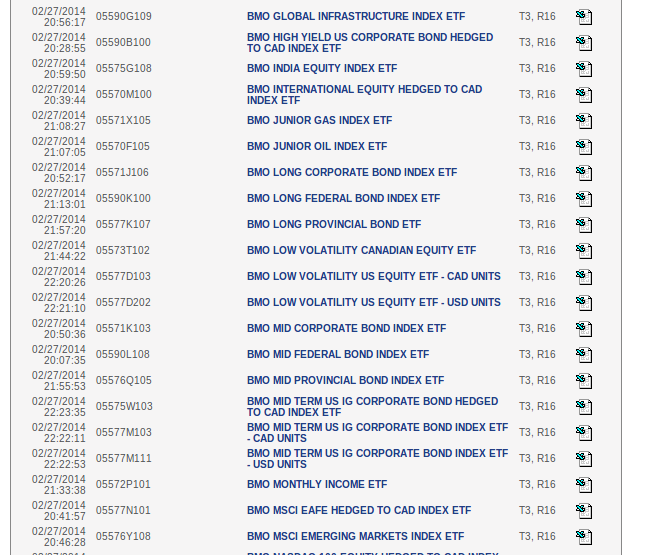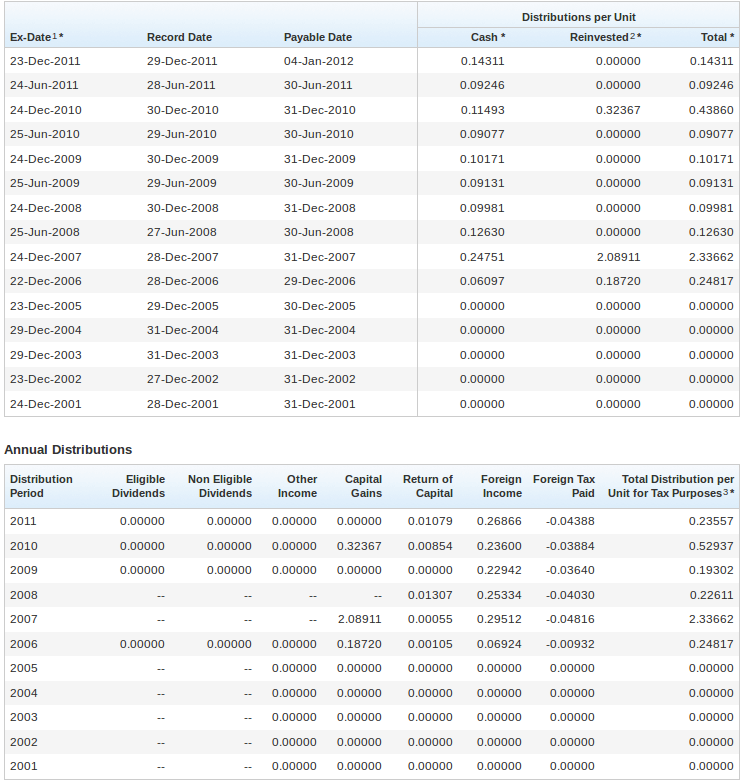HowtoInvestOnline Return of Capital Separating the Good from the Bad
Post on: 10 Июнь, 2015 No Comment

Return of Capital: Separating the Good from the Bad
Investors in mutual funds, ETFs, REITs and Income Trusts often see on their tax slips amongst the different types of income the curiously titled Return of Capital (ROC). It is natural for the investor to wonder if he or she is simply being given his or her money back as a kind of false income. Let us see how ROC comes about to decide if it is good or bad.
Return of Capital consists of distribution amounts in excess of net income. Sometimes that’s good, sometimes it’s bad. Part of the answer depends on taxation.
ROC Tax Rules. ROC, as identified on T3 slips in box 42, is not taxable. Instead of reporting the ROC as income on a tax return, investors receiving a distribution containing ROC must reduce the fund’s Adjusted Cost Base by the amount of the ROC. When the fund holding is later sold, the difference between selling price and the Adjusted Cost Base becomes a capital gain on the investor’s tax return. Two good things are accomplished for the investor — deferral of tax on the ROC portion of the distribution till sale of units and receipt of that ROC distribution income as a capital gain. However, it is possible that years of ROC distributions will reduce the ACB to zero. Any ROC received after ACB reaches zero must be reported in the tax return for the year of receipt as a capital gain, as TaxTips.ca notes in Tax treatment of income from investments in income trusts .
Part of the good vs bad ROC answer also depends on Where ROC comes from :
1) Depreciation in REITs. The primary source of ROC in REITs is Capital Cost Allowance, the amount that the Canada Revenue Agency permits the REIT to deduct for depreciation. According to the Deloitte REIT Guide the REIT generally includes in the distribution an amount labelled as ROC equal to the CCA. Page 9 of the Guide pdf shows how the accounting works.
In terms of being good or bad for the investor, the key point noted by Deloitte is that Although a REIT claims a deduction for CCA, this is in no way representative of the actual deterioration of its assets; it is simply the prescribed rate at which the taxing authorities will allow real estate owners to amortize their acquisition cost. If the REIT maintains its facilities, there is no reason the economic value of its building assets should decline, nor should the REIT’s stock market price decline as a result.
Due to tax deferral and receipt distribution income as a capital gain, ROC in REITs is beneficial when its source is depreciation and when the real estate property maintains its value .
2) Index Mimicking in ETFs. There are two sources of ROC in ETFs. One source is simply that some ETFs may contain REITs. When ROC income is received by the ETF it passes such income along in its original form to shareholders within the ETF distributions, so refer to the explanation for REITs as to how and why ROC occurs in this case.
The other source of ROC in ETFs arises when large institutional investors pay in funds to the ETF managers like iShares’ BlackRock, Claymore and BMO to create new ETF units, which are blocks of shares in the underlying companies of the ETF. (We individual retail investors do not create or redeem units when we buy or sell shares on the stock market; we merely buy or sell shares from other investors.) In order to maintain payout rates as close as possible to the index the ETF aims to track (e.g. iShares’ S&P TSX 60 (symbol XIU) should distribute about 2.7% annually according to its Index quoted on TMX.com ), the ETF will distribute some of the new cash to all — both new and existing, institutional and individual — ETF shareholders. Effectively, some of what would have been dividend income for existing shareholders is transformed into ROC. That’s good ROC. John Heinzl’s recent GlobeInvestor article Explaining the ABCs of dividend-paying ETFs gives more explanation and shows an example.
3) Unrealized Capital Gains in Mutual Funds — As accountant Jamie Golombek explains in Return of Capital. an equity mutual fund with sufficient cash on hand and with an unrealized capital gain at the end of a year, may decide to pay out some or all of that gain. Since no sale of the underlying share holdings occurs, the distribution is not a capital gain and since the distribution also exceeds income, it is treated as ROC. Assuming the investor wants the cash, this kind of ROC is good .
4) Bad ROC aka Giving the Investor’s Capital Back — At other times, funds may actually distribute some of the original capital of the fund to shareholders without having any gains or income to justify the distribution. That’s bad. The fund may do this to maintain a promised distribution schedule. Often this occurs under the disguise label of tax-efficient fund according to Jamie Golombek. The only way to really tell apart good from bad is the investor’s usual obligation — to look at the financial statements to find the source of the ROC .
How to track ROC for your taxes

A previous post on this blog ETFs and Mutual Funds — Calculating Capital Gains works through how to track ROC and ACB for tax reporting. See also the Canada Revenue Agency publication Tax Treatment of Mutual Funds for Investors .
ROC Samples — Below are a few 2009 ROC distributions. Note that:
- ROC can vary tremendously year to year — e.g. RioCan’s have varied between 30% and 63% over the years
The bottom line for differentiating good from bad ROC is to determine whether it results from accounting treatment or from economic reality, i.e. whether it is a superficial or a real return of capital since both are possible.
Disclaimer. this post is my opinion only and should not be construed as investment advice. Readers should be aware that the above comparisons are not an investment recommendation. They rest on other sources, whose accuracy is not guaranteed and the article may not interpret such results correctly. Do your homework before making any decisions and consider consulting a professional advisor.














